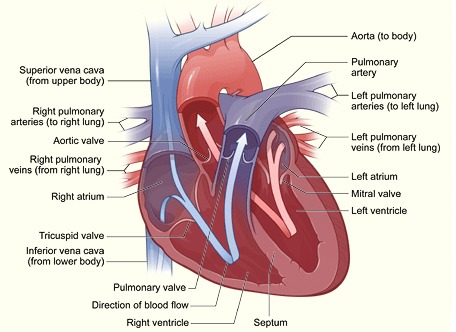How to remember complicated diagrams?
by Katie
(UK)
I have dyslexia and a very bad short term memory. However, I have very recently found out about memory techniques such as the journey method and roman room method.
The journey method is good for remembering terms that have connections, and the roman room method is good for remembering terms that don't have connections. I like to practice these memory techniques. I find it helps with learning and retention of information.
However, when it comes to learning and retaining a complicated diagram that I study, such as a human anatomy diagram, I find it impossible to do so. If I try to draw the diagram after attempting to remember it, it is completely wrong.
Is there any effective memory technique for remembering a complicated diagram. I would be very grateful for a response.
Doug's Reply. I recommend a three-step approach to memorizing diagrams. First, identify all directional processes or other patterns of flow inherent in the diagram. Second, create simple Links to connect the parts of each process. (Pegs can be used as well.)
Third, using your Links or Pegs, practice redrawing the diagram from memory not once but several times. The more attempts the better, making sure to review your memory anchors and the diagram itself after each try.
Another optional but powerful step is to teach the diagram to someone else. Once, during my failed attempt at dental school, I went to the front of the room and drew a diagram of major and minor blood vessels of the body on the chalk board. Though I had memorized the diagram beforehand, this "performance" forced my brain to concentrate intently which noticeably strengthened my retention of the information.
Here's an example:
Interior Structures of the Heart

image: NIH / How the Heart Works
STEP 1. The obvious "process" is blood flow. There are two pathways; one for oxygen-rich blood, the other for oxygen-poor blood. The two paths are kept separate by the septum.
Path 1 (Oxygen-Rich Blood): Lungs > pulmonary veins > left atrium > mitral valve > left ventricle > aortic valve > aorta > body.
Path 2 (Oxygen-Poor Blood): Body > superior & inferior vena cavae > right atrium > tricuspid valve > right ventricle > pulmonary valve > pulmonary arteries > lungs.
STEP 2. Write the terms from each pathway into a simple list.
Path 1:
1. Lungs
2. Pulmonary veins
3. Left atrium
4. Mitral valve
5. Left ventricle
6. Aortic valve
7. Aorta
8. Body
Path 2:
1. Body
2. Superior & inferior vena cavae
3. Right atrium
4. Tricuspid valve
5. Right ventricle
6. Pulmonary valve
7. Pulmonary arteries
8. Lungs
Refer to these lists to construct your links or pegs. (Link lungs to pulmonary veins, then link pulmonary veins to left atrium, etc.)
The process in a particular diagram need not be related to an actual flow of material. For example, if you wanted memorize a diagram of the human skeleton, the "flow" could simply be the order in which the bones are linked from one end of the body to the other.
Important tip: Before trying to memorize any diagram, find out what the structures represent and what is their purpose. Knowing their function and how they work together helps you remember them more easily.
Memorizing anatomy diagrams in particular can be made easier by committing to memory the main Latin prefixes and suffixes. Anatomical terms that are otherwise gibberish suddenly make sense when deconstructed.
Consider "superior vena cava". Superior means "above"; this reminds you that the blood is coming from the upper body. Vena cava means "big veins"; this reminds you that the blood belongs to the oxygen-poor pathway.
One more resource you may find useful are the various mnemonics databases, including medical mnemonics and many others. In a Google search, enter "mnemonics + keyword", where the keyword is the subject matter of the diagram you are trying to memorize.
I've mostly focused here on medical diagrams, but the same general steps can be used to memorize diagrams from any area of study.
Finally, don't feel discouraged. Few people find it easy to memorize complicated diagrams. It's a challenging task for most everyone.
Best regards,
Douglas
Memory-Improvement-Tips.com
Comments for How to remember complicated diagrams?
|
||
|
||
|
||
|
||
|
Click here to add your own comments Join in and write your own page! Return to Ask a Memory Improvement Question |

Newest / Popular
Multiplayer
Board Games
Card & Tile
Concentration
Math / Memory
Puzzles A-M
Puzzles N-Z
Time Mgmt
Word Games
- Retro Flash -
Also:
Bubble Pop
• Solitaire
• Tetris
Checkers
• Mahjong Tiles
•Typing
No sign-up or log-in needed. Just go to a game page and start playing! ![]()
Free Printable Puzzles:
Sudoku • Crosswords • Word Search







